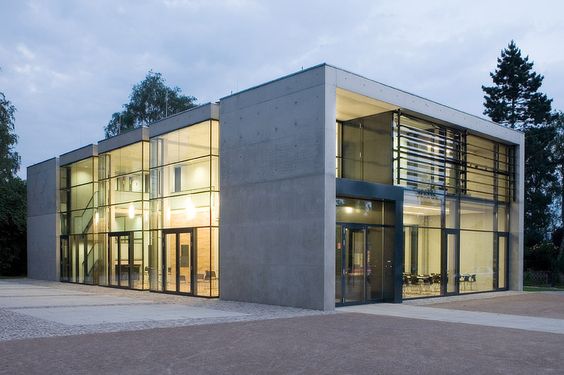Business
How to Select the Right Style for Commercial Windows and Doors?
In the realm of commercial architecture, every element contributes to the overall aesthetics, functionality, and efficiency of a space. Among these crucial components are windows and doors, which not only serve practical purposes but also significantly impact the visual appeal and energy performance of a building. Selecting the right style for commercial windows and doors involves careful consideration of various factors, from architectural design to energy efficiency requirements. In this comprehensive guide, McDowell Glass delves into the key aspects to help you make informed decisions for your commercial project.
Understanding Your Commercial Windows and Doors
The architectural style of your building lays the foundation for selecting appropriate windows and doors. Whether it’s a modern office complex, a historic storefront, or a contemporary retail space, harmonizing the style of windows and doors with the overall architecture is crucial. For instance, sleek, minimalist windows may complement a modern building, while traditional storefront windows with ornate details might be more suitable for a historic renovation project. Understanding the architectural design language ensures that the doors and windows enhance rather than detract from the building’s aesthetic appeal.
Assessing Functional Requirements
Beyond aesthetics, commercial windows and doors must fulfill specific functional requirements dictated by the nature of the space. Consider factors such as security, accessibility, ventilation, and natural light ingress. For instance, retail storefronts may require expansive glass windows to showcase merchandise and attract customers, while office buildings might prioritize energy-efficient windows that reduce heating and cooling costs. Assessing these functional needs helps narrow down the options and ensures that the selected styles align with the practical demands of the commercial space.
Exploring Material Options
Commercial doors and windows are available in a variety of materials, each offering unique benefits in terms of durability, aesthetics, and energy efficiency. Common materials include aluminum, vinyl, wood, and fiberglass. Aluminum frames are lightweight, low-maintenance, and ideal for large commercial projects, while wood frames provide a classic, timeless appeal and excellent insulation properties. Vinyl frames offer affordability and low maintenance, making them suitable for budget-conscious projects. Fiberglass frames combine the strength of materials like aluminum with the thermal performance of wood, offering a versatile option for commercial applications. Assessing the pros and cons of each material helps determine the most suitable choice for your project.
Considering Energy Efficiency
In today’s environmentally conscious landscape, energy efficiency is a paramount consideration in commercial construction. Energy-efficient windows and doors not only reduce utility costs but also contribute to sustainability efforts and may qualify for various green building certifications. Look for features such as double or triple glazing, low-emissivity coatings, and insulated frames to minimize heat transfer and enhance thermal performance. Additionally, consider factors such as solar heat gain coefficient (SHGC) and U-factor ratings to ensure that the selected doors and windows meet or exceed energy efficiency standards mandated by local building codes.
Balancing Cost and Quality
While it’s tempting to prioritize cost savings, opting for the cheapest windows and doors may result in long-term drawbacks such as higher maintenance expenses, poor performance, and shorter lifespans. Instead, strive to strike a balance between cost and quality by investing in high-quality products that offer durability, energy efficiency, and aesthetic appeal. Consider the total cost of ownership, including installation, maintenance, and energy expenses, over the lifespan of the doors and windows. Partnering with reputable manufacturers and suppliers like McDowell Glass ensures that you get superior quality products backed by warranties and reliable customer support.
Customization and Brand Identity
Commercial doors and windows provide an opportunity to reinforce brand identity and create a distinctive architectural signature. Consider customization options such as custom colors, finishes, hardware, and glazing patterns to align with your brand aesthetics and enhance the visual impact of the building. Whether it’s incorporating company logos into glass panels or selecting hardware that complements the brand’s image, customization adds a personalized touch to the commercial space, making it memorable and recognizable to clients, customers, and visitors.
Seeking Professional Guidance
Navigating the myriad options and considerations involved in selecting commercial doors and windows can be overwhelming. Consulting with experienced architects, designers, and window specialists can provide invaluable insights and guidance throughout the decision-making process. Professional experts can assess your specific project requirements, recommend suitable styles and materials, and ensure compliance with building codes and regulations. By leveraging their expertise, you can streamline the selection process and achieve optimal results for your commercial project.
Conclusion
Choosing the right style for commercial doors and windows is a multifaceted process that requires careful consideration of architectural design, functional requirements, material options, energy efficiency, cost, brand identity, and professional guidance. By understanding these key aspects and collaborating with trusted partners like McDowell Glass, you can ensure that your commercial space is equipped with doors and windows that not only meet practical needs but also elevate the aesthetics, performance, and sustainability of the building. Invest wisely in high-quality products that reflect your brand values and contribute to the long-term success of your commercial venture.





